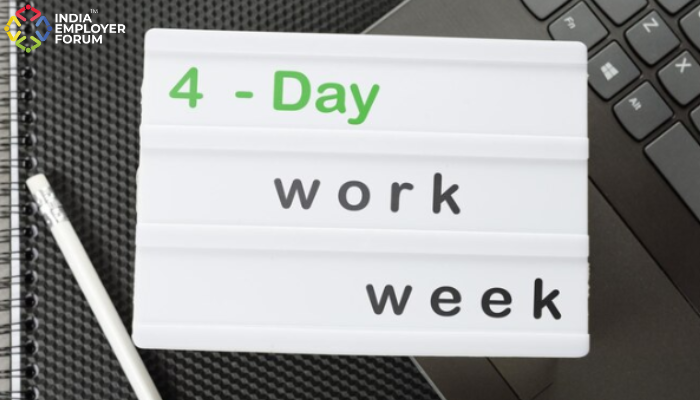The 21st century organizations operate in a VUCA (volatile, uncertain, complex and ambiguous) environment that challenges boundaries and demands more transparency and agility. These ever-changing dynamics can be managed only by building a strong company culture that allows diversity, collaboration and a flexible working environment. People are at the center of dealing with this dynamism and the best talent can be attracted only with a healthy company culture.
The definition of success for the new age workers is quite fluid and is not restricted to vertical growth. It can also be achieved by being in different kinds of roles with new experiences, upskilling oneself constantly and tapping into their networks. This will certainly need an alteration in the organizational structure to make it more diverse and look at options outside the traditional full- time employment. When the organizational culture incorporates this flexibility and learning, top talent can be engaged.
To meet the future challenges, organizations need to identify initiatives that can accelerate these changes and design a plan for the implementation of these initiatives. These changes will primarily be driven by the following forces:
- Organizational Redesigning: The engagement of workers will increasingly be based on talent more than money and will go beyond the traditional hierarchies. Organizations will become more and more transparent to its stakeholders and become more flexible giving rise to increased project- based relationships. This kind of collaboration will make leadership a more collective concept and will assist in building a strong company culture.
- Diverse Talent Pool: Higher number of skilled women in the workforce, greater mobility of talent and greater longevity has made the workforce extremely diverse and multigenerational. Organizations are looking beyond full- time employment giving rise to different kinds of policies, practices, pay and work designs. Workers, too, understand the importance of company culture and choose organizations based on the opinions of socially connected network and opinion leaders.
- Flexibility in a Connected World: With cloud technology, remote working has become not only possible but a preferred option for many people. Real- time communication and boundary- less collaborations have the capability to redefine careers and redesign work culture.
- Technology and Innovation: Artificial intelligence, robotics, internet and many such technologies have enabled business reinvention and innovation. It helps the organizations and workers to be flexible and manage the rapid skills obsolescence. This can only be done by a work culture that supports continuous learning and innovation.
- Collaboration between Humans and Technology: While the new technology is making a lot of manual tasks obsolete, it is also creating new kinds of work at the interface of human and technology. Organizations and workers are striving to redesign their work to optimize rather than resist this change. Building a strong company culture that encourages workers to embrace continuous transformations can give them a competitive advantage.
Like most disruptions in work environment, not all these trends will influence every organization. Leaders need to understand where their organizational culture is and what strategy they need to adopt to keep up with the change that affects them.
A unique consortium of CEOs and CHROs, called CHREATE came together to map how work in organizations must evolve to meet future challenges and developed a topography with four quadrants based on the degree of democratization of work and the degree of technological environment. Different degrees of these two parameters indicate different approaches to work. These quadrants that describe four categories of work in the future, was described by John Boudreau in his article in Harvard Business Review.
- Current State: It indicates full- time employment, with some variations like contractual, part-time and flexible working options with traditional delivery methods. This category of work is low on both democratization of work and technological empowerment. It includes work that requires a specific time and place, where physical connections are necessary, like secure facilities, physically demanding work environments like oil rigs or retail outlets. However, this work arrangement demands an organizational culture where work is stable and traditional rewards and performance systems are adequate.
- Today, but Turbo Charged: It refers to full- time employment with some variations and is delivered by new technologies like cloud, artificial intelligence and personal devices. This category of work is low on democratization of work but high on technological empowerment. In organizations engaging in this category of work, technology evolves rapidly but management and workplace arrangements evolve slowly. While the workplace culture is traditional, they are supported by faster, better and cheaper technology and systems like personal devices and cloud- based human resource information. Call centers are a good example which is operated with traditional employees but in remote locations and with flexible working hours.
- Work Reimagined: This kind of work involves work through platforms, projects, gigs, freelancing etc. through traditional delivery. While it involves higher democratization of work, the level of technological empowerment is low. The organizations work with newly evolving employment models but are mainly supported by slower- evolving technology. This kind of work can be seen in freelance social platforms and revolve around employment planning systems by improving on traditional recruitment systems to constantly track and communicate with passive job seekers using the existing social tools.
- Uber Empowered: This kind of work involves higher democratization of work that is powered by high technological empowerment. The work is done via platforms, projects, gigs, freelancing and contracts and is delivered by new technologies such as cloud, artificial intelligence etc. The workers don’t work for any single employer and can be found on platforms using technology. This open talent marketplace includes details about capabilities, qualifications, work requirements, updated work history and any other details that might be needed to match the workers and the work.
All the four work styles will continue to be a part of workplace culture for at least a decade and organizations might move from one to the other depending on their changing needs. Mapping these categories of work can be an effective way for organizations to determine which quadrant they are in and where they want to be based on where they see maximum value and minimum risk to reach their future goals. It can go a long way in utilizing the resources optimally and functioning to the best of their capability.
These quadrants emphasize on two very important aspects. One, as work is becoming more democratized and fueled by technology, contingent labor is becoming increasingly important. Two, the existence of one kind of work does not indicate absence of the others in any organization. Over time, organizations can move from one type of work to another depending on their needs and goals. This indicates that gig economy might not necessarily take over the work system or eliminate traditional jobs. Building a strong company culture that creates a sense of security and is prepared for such fast- paced changes can give the organizations the much- needed competitive advantage.
References:
- Work in the Future Will Fall into These 4 Categories- John Boudreau, 17 March, 2016
- The 4 Kinds of Work in the Future- 24 March, 2016
- Five ways work will change in the future- Killian Fox, Joanne O’Connor, 29 November, 2015




